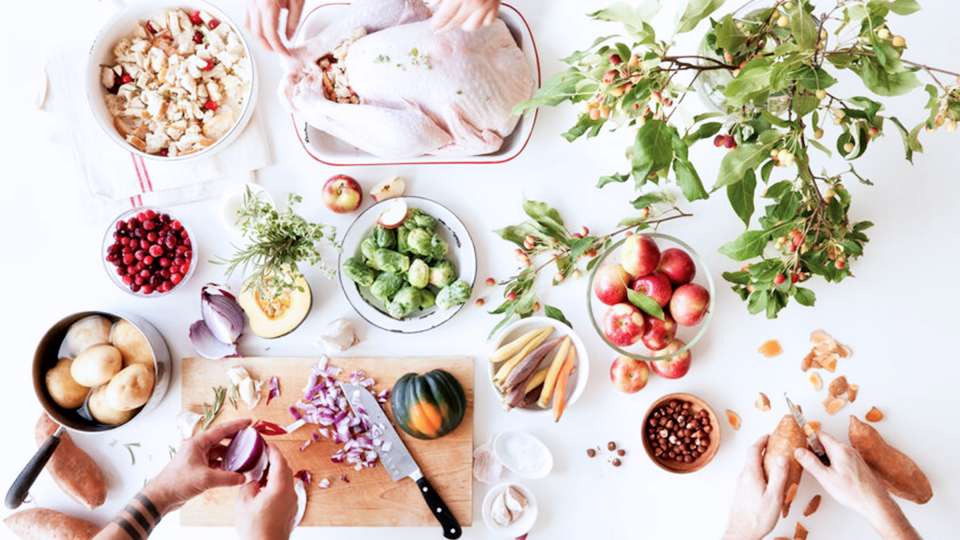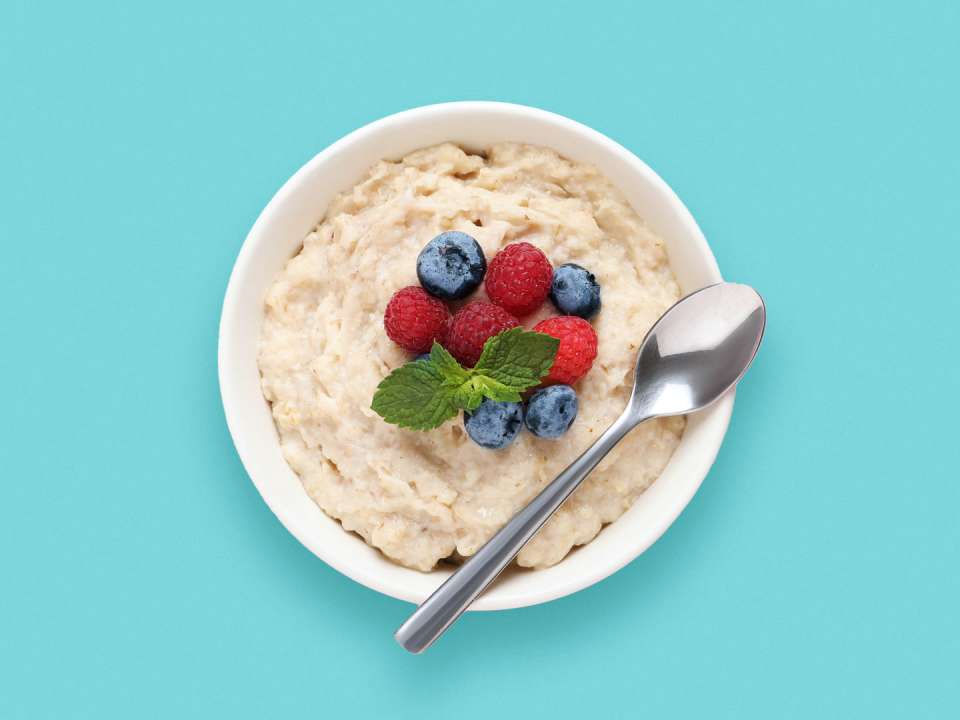
It's hard to eat healthy during the holidays. You're surrounded by more food than you could ever need, most of it full of salt and sugar, and there's always that one aunt who insists you eat her fruitcake even though just looking at it makes you lose your appetite.
But not all hope is lost. There are ways to still indulge in delicious holiday dishes without compromising healthy eating habits.
We asked several dietitians to share their favorite healthy holiday mealtime tips for some #foodinspo — plus tips for how to honor your holiday traditions while still keeping health in mind.
Roasted vegetables
The first healthy holiday dish that always comes to mind for dietitian Michael Lynch, who sees patients at Valley Medical Center, is also a simple one: roasted veggies.
“They’re so good and healthy, and roasted root vegetables really help you celebrate the season,” he says.
Root veggies include potatoes, carrots, turnips, onions and more. For potatoes, Lynch likes using red or Yukon gold potatoes for extra flavor. He also likes to roast potatoes (with the peels on) then mash them for delicious homemade mashed potatoes.
“Potatoes are one of the best sources of potassium, and a lot of it is in the peel,” Lynch says.
Roasting is pretty easy: all you need is some oil and spices.
For dietitian Judy Simon, who sees patients at University of Washington Medical Center-Roosevelt, some of her favorite veggies to roast are sweet potatoes and brussels sprouts.
Homemade desserts
If you have a sweet tooth, forgoing dessert entirely during the holidays is pretty much impossible. But you can limit your sugar intake by making your own dessert instead of buying something from the store.
Homemade desserts will likely have less sugar and fat because you can control how much you put in, Simon says.
She likes to make a homemade pie or two during the holiday season. And she makes everything from scratch — even the whipped cream.
“Growing up, my aunt always made pies. She had a step ladder, and each kid would take turns beating the heavy cream. It’s a good memory,” she says.
For Lynch, homemade desserts and other foods are a critical part of making sure food is delicious but still nutritious, especially since he has type 1 diabetes and has to make sure he sticks to a healthy diet — even during the holidays.
He especially likes to make homemade pumpkin pie — using whole pumpkins, not the canned stuff.
His other favorites are mixing pecans and dates for a healthy but super-sweet dessert, or making pudding using avocado and cacao powder, which is essentially chocolate without all the added sugar.
Homemade cranberry sauce
If you were at a holiday meal prepared by dietitian Diane Javelli, who sees patients at UW Medical Center, you’d likely encounter at least one dish with cranberries. She especially likes making her own cranberry sauce.
“I jazz it up by adding cinnamon, currants and fresh oranges, and I replace some of the sugar with orange juice and a touch of Grand Marnier,” she says.
She also likes to add cranberries to homemade stuffing, vegetable dishes and baked goods.
Experimental veggie sides
Instead of going with the standard green bean casserole or corn on the cob, mix it up a little by trying new vegetable dishes.
Aside from the aforementioned roasted sweet potatoes and brussels sprouts, Simon also loves making butternut squash with lentils. Her new favorite veggie dish is cauliflower tabbouleh. She makes it using cauliflower along with fresh herbs and pomegranate.
Lynch also likes squash: he roasts it with parmesan and breadcrumbs.
If you try new veggies or try cooking familiar veggies in a new way, it can liven up your holiday meal with a dish that feels experimental but is also super healthy.
Homemade sauces, dips and dressings
One way to easily and quickly make a meal healthier? Make your own condiments.
“Conventional dressings and sauces just have tons of sugar, salt, fat and are heavily processed,” Lynch says.
If you make your own salad dressing or cranberry sauce, you control exactly what you put in it — and you’ll probably put way less salt or sugar than is in the store-bought stuff.
Store-prepared meals
If you’re really strapped for time or a holiday meal and hosting sneaks up on you, there’s a way to keep things healthy without having to cook: Buy homemade holiday meals from your local grocery store or market.
Many stores offer full, several-course meals during the holidays; they’re healthier than buying everything out of a can, box or frozen, and they’re usually not as expensive as you might think.
“Because they’re making it from scratch, they use fresh ingredients. You can still have a lovely dinner by getting it pre-prepared,” says Simon.
How to make holiday meals even healthier
Just as important (maybe even more) than what you eat is how you eat. Here are some expert tips for making sure you feel happy and satisfied after a holiday meal, rather than falling into a food coma.
Slow down and be thoughtful
For many of us, the holidays are hectic; this is even truer if you’re hosting a dinner or gathering where you have to provide the food.
When you can, try to break from the hustle and bustle and really think about what you’re planning on making and how you’re planning on eating it.
If you’re hosting, ask people to contribute their favorite dishes — and find out what they are ahead of time so what you make complements what they bring.
If you’re attending someone else’s event, thoroughly consider all the options before filling your plate. Choose things that will make you feel good and assert your right to say no to foods that don’t agree with your stomach or don’t appeal to you.
When you’re eating, whether you made the food or not, try to slow down and savor. Enjoyment is the whole point of a special meal, after all. Making a conscious decision to eat that piece of pie — and thoroughly enjoying every bite — is healthier than stuffing your face with everything in sight just because it’s there.
“The best Thanksgiving meal I’ve had was at a friend’s house. It took me almost three hours to eat a plate of food, because it was so good and I wanted to enjoy every bite,” Lynch says.
If you make thoughtful choices, you’re less likely to overeat and more likely to fully experience the meal.
Don’t starve yourself before a big meal
It might seem like a good idea to eat nothing or very little before a big holiday meal — then you’re saving room for more, right? In reality, doing that only sets you up for overeating and a food coma.
Instead, try to have a light, healthy snack — think a serving of fruits and veggies or a small portion of nuts — within an hour of the meal, along with a glass of water.
“That food lessens our hunger hormone and starts transitioning into the digestion system, so the digestive hormones are then going back to your brain to suggest that there’s some food in there, and that lowers the hunger signal,” Lynch explains.
Make lighter dishes
Another way to avoid a food coma? Try incorporating some lighter dishes into your holiday meal planning.
“If people are worried about big meal syndrome, make sure there are veggies and things that are simpler and lighter,” Simon says.
If you’re the cook, try to plan lighter side dishes ahead of time so you and your guests won’t have as many rich foods to eat. Lighter dishes can include things like veggie sides, fruit platters or other light appetizers.
And if you’re a guest, look for lighter foods to help balance your plate out.
Turn activity into a new tradition
For many of us, the holidays revolve around two things: food and family (and friends). Often, the two are combined. If you’re concerned about overeating or feeling stuffed during the holidays, try incorporating a new tradition into your gatherings: exercise.
“Every activity during the holidays doesn’t have to end with a meal,” Simon says.
For her, this is as simple as a family walk around the neighborhood after a meal. For you, it could mean not skipping your normal morning exercise routine, going to the park with friends to shoot some hoops or running around in the backyard with the kids.
However you choose to be active, the important part is making sure you’re getting up and moving around instead of just sitting all day.
Allow yourself to indulge a little
Most of us have that one dish we simply can’t do without during the holidays, no matter how “unhealthy” it is.
For Simon, that’s the traditional potato latkes she makes with her family. Cooking them in oil is part of the tradition, and Simon embraces it.
For Javelli, it’s stuffing.
“Stuffing is my very favorite thing but I refuse to make a healthy version of it because I love it just the way it is. I figure since I only eat it once or twice a year I'm not going to feel one bit guilty about it,” Javelli says.
For you, it might be your grandma’s pecan pie or making tamales with your friends or your dad’s corn pudding recipe. Whatever it is, let yourself fully enjoy it — and, of course, fully enjoy your time with the people you share the meal with.

 Healthy ideas for your inbox
Healthy ideas for your inbox





